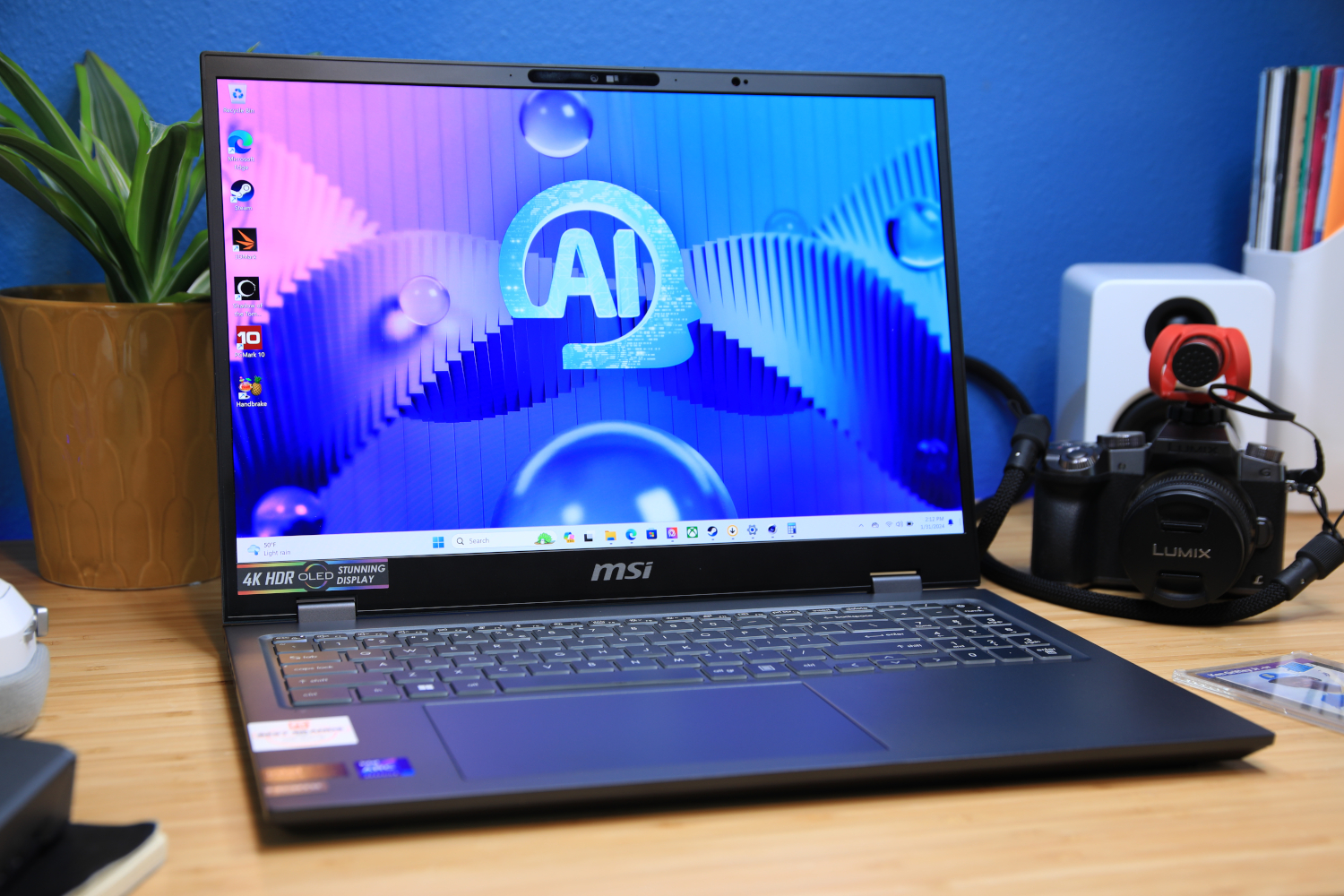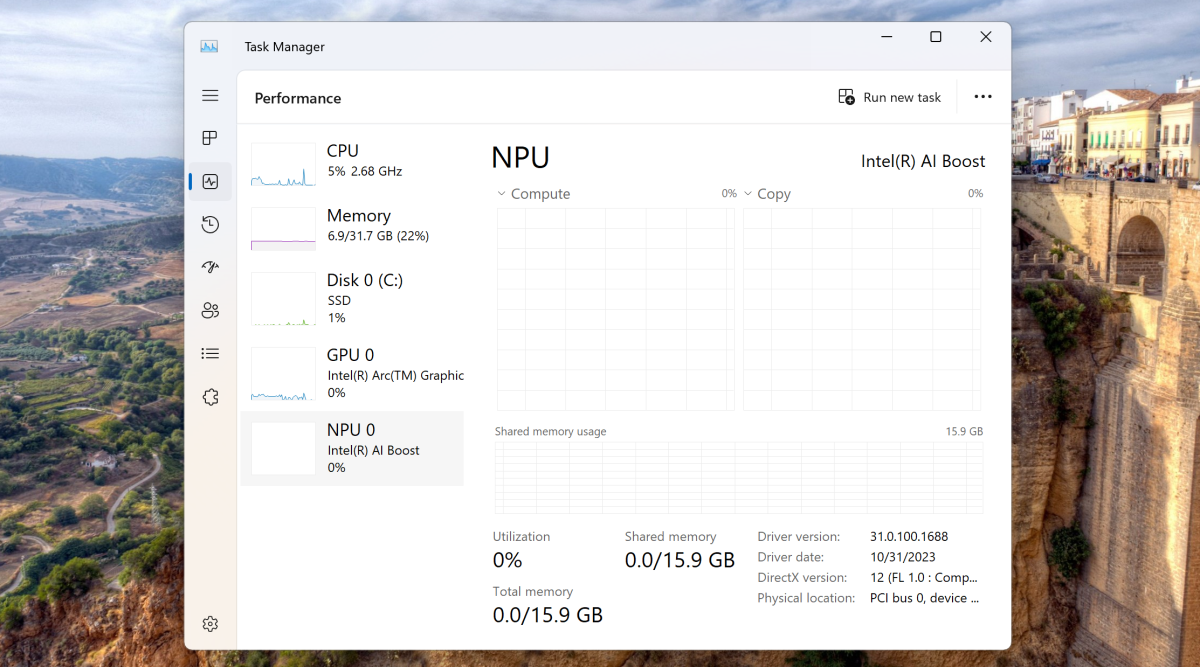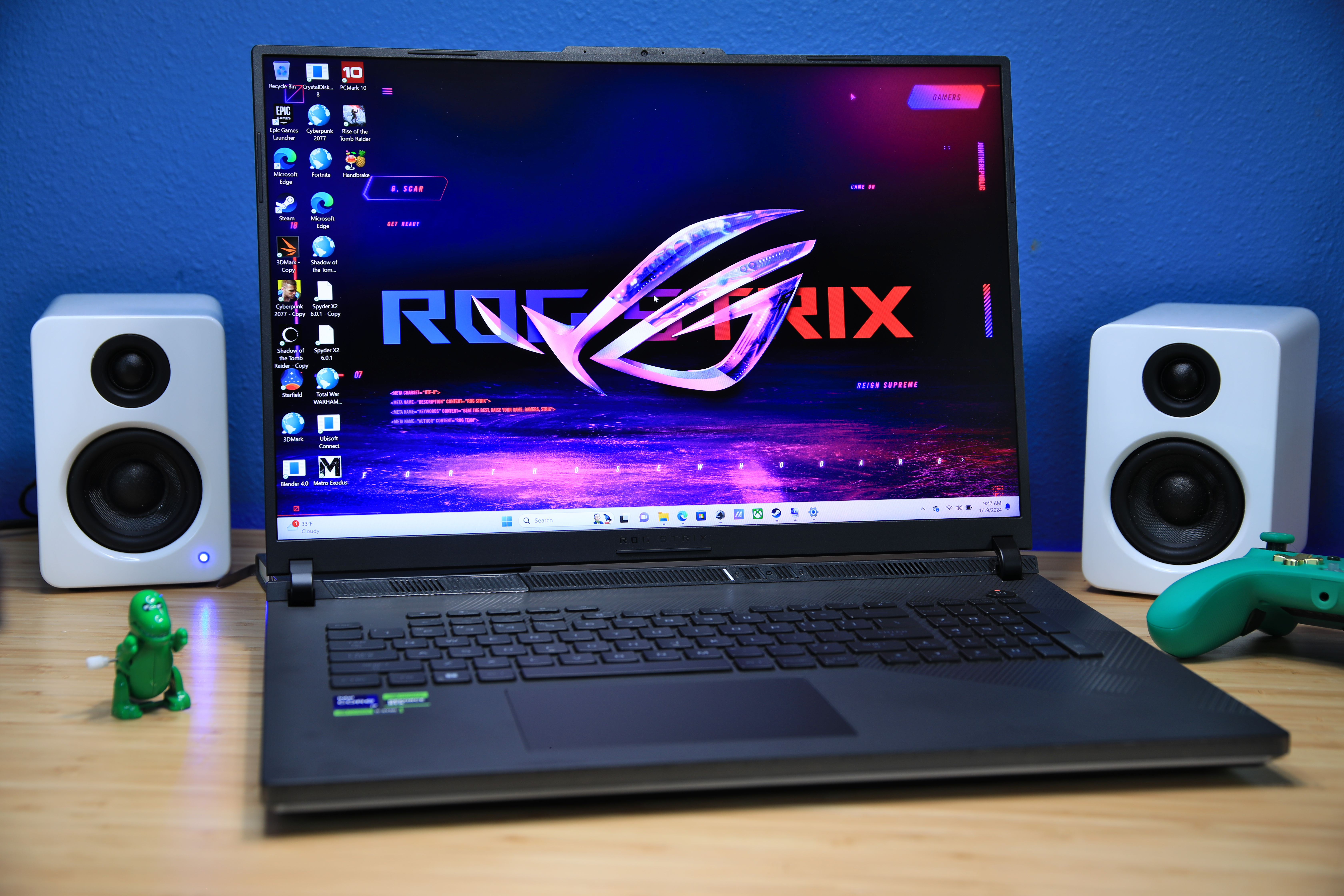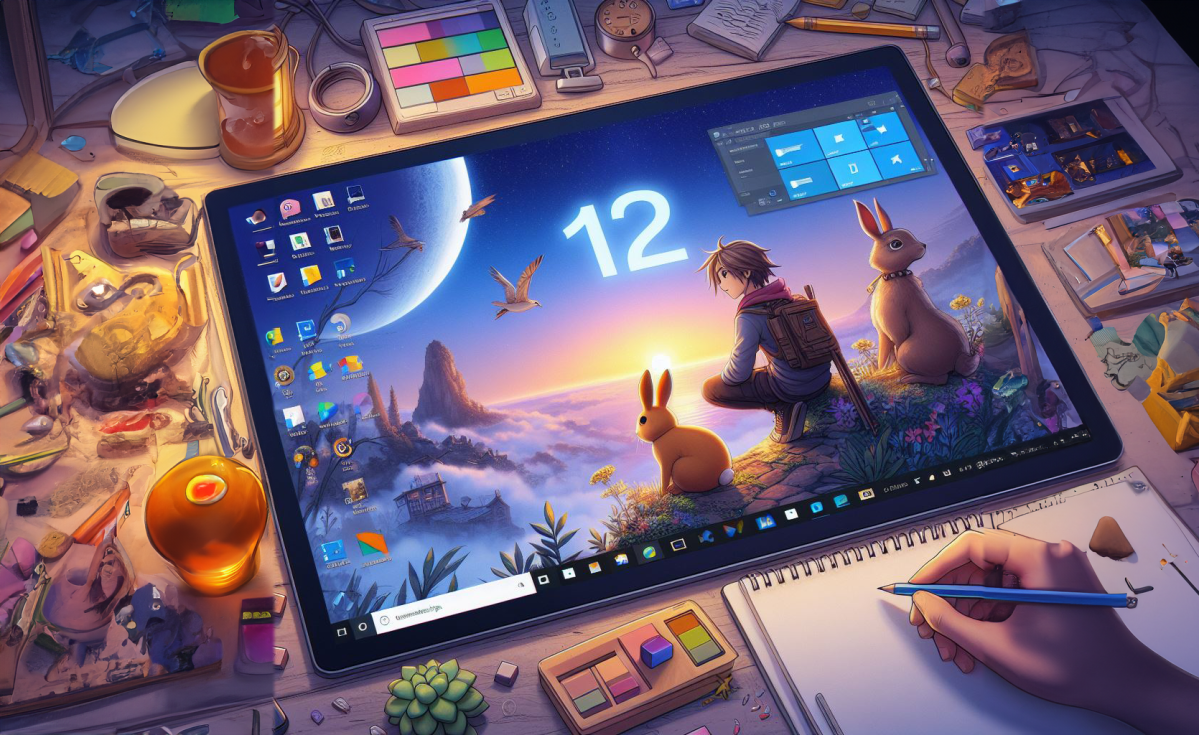Does your next laptop really need to be an AI PC?
We’re now in “the age of the AI PC,” according to Microsoft. In 2024, so-called “AI PCs” are popping up everywhere thanks to new chips from Intel, AMD, and (soon) Qualcomm. Don’t believe the hype: AI PCs aren’t what the marketing might lead you to believe they are, and the most powerful “AI PCs” you can buy today aren’t what you might think.
Let’s cut through the marketing hype and talk about what these “AI laptops” actually are — and what you can actually do with them today.
Want more Windows tips? Subscribe to my Windows Intelligence newsletter to get all the latest tips, tricks, and news sent straight to your email inbox.
What is an “AI PC,” exactly? A solid new laptop infused with an npu MSI Prestige 16 Read our review
Price When Reviewed:
$1,649.99
Best Prices Today:
$1629.85 at Amazon
Read our review
Price When Reviewed:
$1,649.99
Best Prices Today:
$1629.85 at Amazon
The AI PC marketing craze is all thanks to the of neural processing units (NPUs) appearing in modern laptops. The latest Core Ultra chips from Intel, recent Ryzen hardware from AMD, and Qualcomm’s upcoming Snapdragon X Elite have built-in hardware designed to accelerate AI tasks in a power-efficient way.
Now, PC makers are delivering some interesting hardware. NPUs definitely have some promise. But Microsoft Windows hasn’t caught up yet: Windows just can’t do much with an NPU. Third-party application developers haven’t caught up yet, either.
Windows can’t do much with an NPU yetIf you have an “AI PC” with an NPU, you get access to Windows Studio Effects. These are some extra features that use your PC’s NPU to tweak your video and audio in video calls online.
For example, Windows Studio Effects can make it look like your eyes are looking directly into the camera, blur your background, and make your microphone’s audio clearer. That last feature — making your microphone’s audio clearer — is apparently coming to all Windows 11 PCs soon.
Aside from Windows Studio Effects, none of the built-in AI features on Windows 11 can use an NPU.

NPU not being used.
Chris Hoffman/IDG
Windows Studio Effects offers some cool tricks, but it’s hardly a bounty of “AI PC” features that will upgrade your workflow, like you might be led to expect.
PC makers may bundle their own AI tools with laptops that use the NPU to do things like control how fast your PC’s fans spin (funny, we never needed fancy hardware for that before!) to demonstrate the advantage of having an NPU. But, at the start of 2024, these are all fancy tech demos because Microsoft hasn’t delivered anything compelling yet.
Most consumer AI tools run in the cloud, with any laptopIt’s worth noting that the consumer AI tools out there in the wild don’t need an “AI laptop” at all.
Whether you’re using Windows 11’s built-in Copilot AI tool, ChatGPT, or Google Gemini, these all run “in the cloud” — in other words, the hard computing work happens in a large corporation’s data center, not on your computer. If you use Copilot Pro to access AI features in Office apps like Word and Excel or Adobe Firefly in Photoshop, all the processing happens in Microsoft and Adobe’s data centers.
So, whether you have an “AI PC” or not, Windows Copilot won’t work any differently. That’s disappointing.

Microsoft
Microsoft has been muddying the waters a bit by talking up its new Copilot key on the keyboard as part of its AI PC push. But even if you have an AI PC with a fancy key that opens the Copilot sidebar, Copilot will work the exact same way as it will on any other PC. (And you can always press Windows+C to launch Copilot — no new keyboard necessary.)
Windows may deliver “AI PC” features in the futureMicrosoft hasn’t announced specifics yet, but it’s widely believed that a big release of Windows later in 2024 will have built-in AI features that put neural processing units to use.
That big upgrade to Windows may be a new version of Windows 11 named “Windows 11 version 24H2” or it may be called Windows 12. Either way, updates like that generally launch in the fall, which means that these “AI PCs” might not get any interesting AI features provided by Windows until October or November of 2024 — near the end of the year.
get windows 11 pro for cheap Windows 11 Pro Price When Reviewed:
199.99
Best Prices Today:
$59 at PCWorld Store – Win 11 Pro Upgrade Only |
$79.99 at PCWorld Software Store
Price When Reviewed:
199.99
Best Prices Today:
$59 at PCWorld Store – Win 11 Pro Upgrade Only |
$79.99 at PCWorld Software Store
Again, it’s worth noting that Microsoft hasn’t announced specifics. There’s been a lot of hand-waving about future AI features that will proactively help you take action in Windows. The idea is that an NPU could power these AI features in a power-efficient way even when a typical consumer or business laptop is running on battery power. You might need an NPU in your PC to take advantage of these future Windows features.
The reality is that there’s likely not much you can do with those “AI PC” features until near the end of 2024 — and we don’t even know exactly what you will be able to do with them.
Or maybe Microsoft will release something even sooner! Perhaps we’ll get a big Windows upgrade in late summer instead of fall. It’s possible. That’s the problem: I have to speculate because the company hasn’t made concrete announcements yet.
I’ve always believed that you shouldn’t buy hardware based on the promise of what it can do in the future — you should buy it based on what it can do for you today. After all, if you do want those AI PC features in late 2024, you can buy an AI PC then — and you may be able to save a good chunk of cash by scooping one up on a sale around then! It is awfully close to Black Friday.
AI PC software isn’t consumer-ready
Audacity’s AI plugins.
Audacity
An AI PC can certainly do some things, but it’s limited to tech demos and open-source tools you have to hunt down and install. You can install AI plug-ins for Audacity — a specific, old version of Audacity — to do things like suppress noise, transcribe audio files, and generate music. You can also get AI plug-ins for the open-source GIMP image editor to generate images with Stable Diffusion and access other AI art tools.
That’s the kind of thing that’s available for AI PCs right now — open-source plug-ins for open-source applications that can use the hardware, overwhelmingly for creative workloads. Now, the hardware has promise, and I love open-source software — but this is not consumer-ready software the average person will be using. This isn’t the type of thing the PC industry should be building a whole “AI PC” sales push on top of.
Want a real “AI PC”? Look for a powerful GPUNeural processing units are interesting, and I really look forward to seeing what Microsoft and Windows do with them in the future.
But if you’re just using Copilot, ChatGPT, and other consumer AI tools, you don’t need an AI laptop for that. In fact, an AI laptop won’t speed them up at all!
But what if you’re not just using these “consumer” AI tools? What if you’re installing Stable Diffusion to generate AI images on your own hardware, playing with the LLaMA large language model to get a chatbot running on your own PC, and using similar software?
Well, good news: You may already have an AI PC. PCWorld’s AI PC benchmarks show powerful GPUs are faster at running these generative AI models than dedicated NPUs.
If you run tools like that, you’ll want a laptop with a powerful GPU — of course, you’ll get even better performance from a desktop with a powerful GPU.
A powerful modern laptop with a potent nvidia gpu inside Asus ROG Strix Scar 18 (2024) Read our review
Price When Reviewed:
$3,899.99
Best Prices Today:
$3899.99 at Asus |
$3899.99 at B&H |
$3899.99 at Best Buy
Read our review
Price When Reviewed:
$3,899.99
Best Prices Today:
$3899.99 at Asus |
$3899.99 at B&H |
$3899.99 at Best Buy
Here’s another example: Nvidia just released Chat with RTX, a generative AI tool that lets you provide your own text files to work with a chatbot that runs on your own hardware. You’ll need an GeForce RTX 30- or 40-series GPU to use this.
GPUs will likely continue to outshine NPUs at AI tasks like these in the future, too. So what’s the point of an NPU, you might ask? Well, an NPU is faster at running these sorts of AI tasks than a CPU, and it’s less expensive and more power-efficient than a GPU. Beefy GPUs are expensive and power-hungry. A future in which every laptop being released has an NPU will let Microsoft and other software developers deliver AI features that run on all modern PCs — and they can work on battery power without draining everything extremely quickly, too.
That sounds great — for the future. But if you want an “AI PC” that’s the fastest it can be, you’ll want that potent GPU. You’re better off looking for a powerful gaming laptop with a beefy Nvidia GPU than an “AI laptop.”
When it comes to running your own AI models, Nvidia has the lead: I like AMD Ryzen hardware, too. But if AI is a priority, there’s just more you can do with Nvidia GPUs at the moment — Nvidia is releasing tools like Chat with RTX, and software like Stable Diffusion is more optimized for Nvidia hardware. Nvidia has been developing CUDA for machine learning tasks for years now and has a massive lead in overall software support over AMD’s Radeon division.
NPUs and “AI laptops” have a lot of promise — one day Bing Image Creator
Bing Image Creator
Microsoft may turn AI laptops into a compelling product with an upgrade to Windows later this year. I look forward to seeing those features, and I hope I’ll one day write that of course you want an NPU in your laptop so you can do all these useful things with it.
But AI laptops aren’t there yet. You should know that before you shell out the cash for a new laptop.
That said, if you are in the market for a new laptop and you don’t want a beefy GPU inside it, you might want to buy one of these “AI laptops” with an NPU anyway. All the best laptops with Intel’s latest Core Ultra chips will be “AI PCs,” along with notebooks powered by AMD’s Ryzen 8000 mobile processors.
Just don’t buy an AI PC because you’re expecting big workflow changes — or any workflow changes — today. If you do, you’ll be disappointed. Still, the future is looking bright. Let’s wait and see what happens.
Want more Windows tips? Subscribe to my Windows Intelligence newsletter to get all the latest tips, tricks, and news sent straight to your email inbox.
Laptops